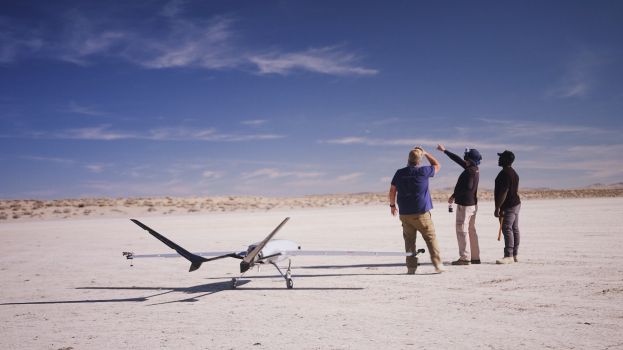K
Kathleen Martin
Guest
On January 5th, Iris Automation announced a partnership with Doosan Mobility Innovations (DMI) and Drone America in which the three companies committed to a major collaboration. The agreement outlines both the integration of their respective technologies with one another as well as the sharing of operational resources for the testing and evaluation of aircraft platforms and infrastructure to support commercial beyond visual line of sight (BVLOS) operations.
What is the significance of these three particular companies getting together and working in tandem? Simply put, each one has a distinct product or solution that is designed to facilitate longer and more independent autonomous flights. In this case, the whole isn’t necessarily greater than the sum of the parts, but it does showcase what an especially well-defined BVLOS operation can look like.
Iris Automation’s detect and avoid (DAA) technology is the component that guarantees that all crewed and uncrewed platforms will maintain safe separation from fixed objects and from each other while flying unsupervised. DMI has focused on the development of longer-flying unmanned platforms by using hydrogen fuel cells as their power source. Drone America is focused on medium to large-scale aircraft and the autonomy of flight, notably for first responders, critical delivery services, inspections, and infrastructure surveying.
By aligning goals and resources, these three leaders of the industry have established a clear path forward for safer and longer flights in an effort to prove to the regulators like the FAA. This combination showcases that BVLOS, autonomous flights are feasible within the frame of existing technology. The true challenge is more about integration and testing than it is about the technical capability of the hardware or software.
We reached out to Lori DeMatteis, Global Vice President, sales, marketing and customer Success at Iris Automation during her busy schedule at CES, for an exclusive interview about the partnership and their immediate plans to make a difference in the industry.
“We are very excited that the industry is finally working together to bring together these kinds of solutions,” DeMatteis told Commercial UAV News. “We are moving from an individualistic siloed approach to joint partnerships and solutions which add value overall to the entire ecosystem, which is uplifting the entire ecosystem if you will.”
Continue reading: https://www.commercialuavnews.com/regulations/partnerships-define-a-path-toward-bvlos-operations-in-support-of-the-entire-drone-industry
What is the significance of these three particular companies getting together and working in tandem? Simply put, each one has a distinct product or solution that is designed to facilitate longer and more independent autonomous flights. In this case, the whole isn’t necessarily greater than the sum of the parts, but it does showcase what an especially well-defined BVLOS operation can look like.
Iris Automation’s detect and avoid (DAA) technology is the component that guarantees that all crewed and uncrewed platforms will maintain safe separation from fixed objects and from each other while flying unsupervised. DMI has focused on the development of longer-flying unmanned platforms by using hydrogen fuel cells as their power source. Drone America is focused on medium to large-scale aircraft and the autonomy of flight, notably for first responders, critical delivery services, inspections, and infrastructure surveying.
By aligning goals and resources, these three leaders of the industry have established a clear path forward for safer and longer flights in an effort to prove to the regulators like the FAA. This combination showcases that BVLOS, autonomous flights are feasible within the frame of existing technology. The true challenge is more about integration and testing than it is about the technical capability of the hardware or software.
We reached out to Lori DeMatteis, Global Vice President, sales, marketing and customer Success at Iris Automation during her busy schedule at CES, for an exclusive interview about the partnership and their immediate plans to make a difference in the industry.
“We are very excited that the industry is finally working together to bring together these kinds of solutions,” DeMatteis told Commercial UAV News. “We are moving from an individualistic siloed approach to joint partnerships and solutions which add value overall to the entire ecosystem, which is uplifting the entire ecosystem if you will.”
Continue reading: https://www.commercialuavnews.com/regulations/partnerships-define-a-path-toward-bvlos-operations-in-support-of-the-entire-drone-industry

